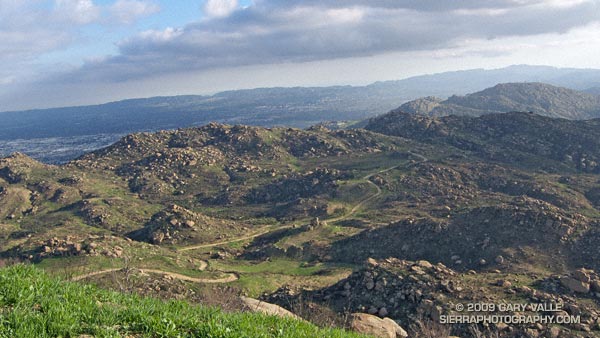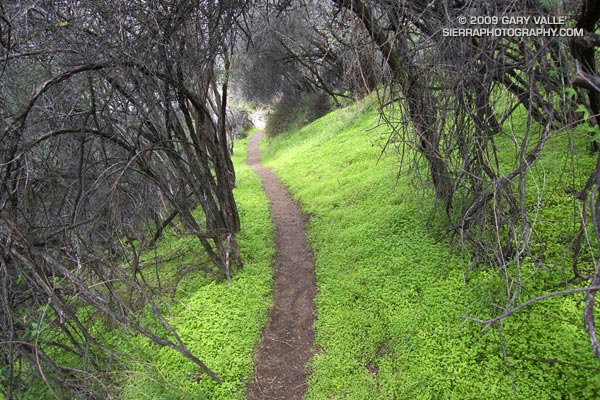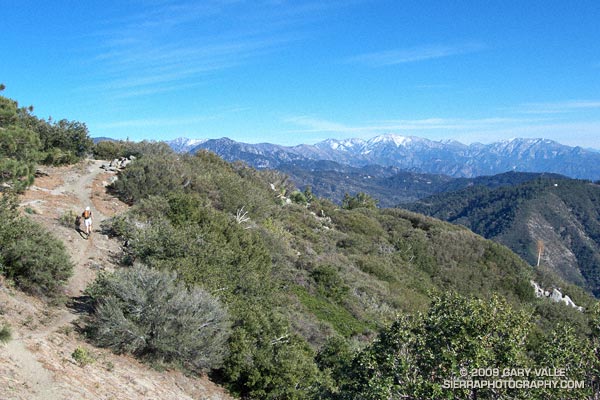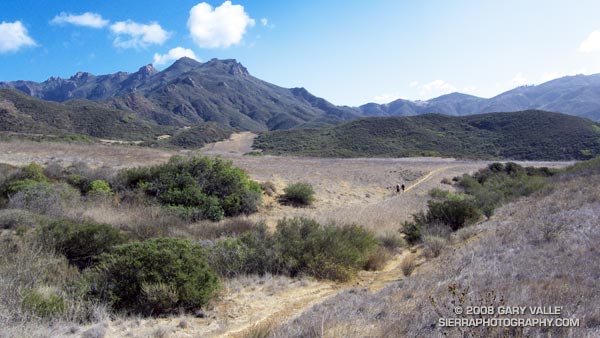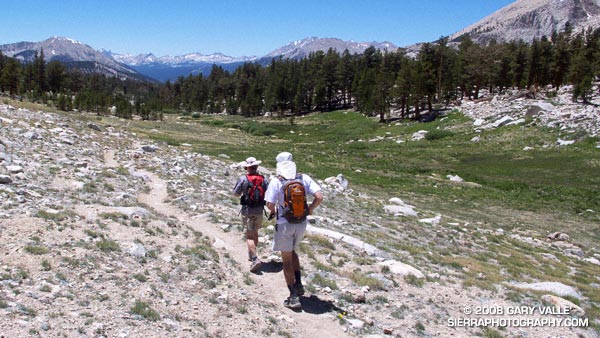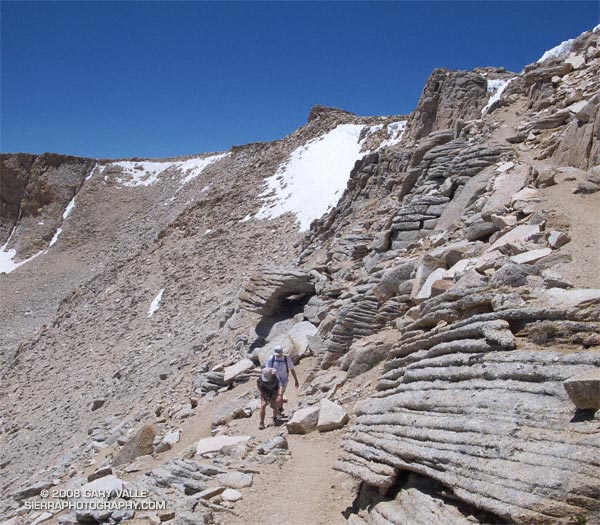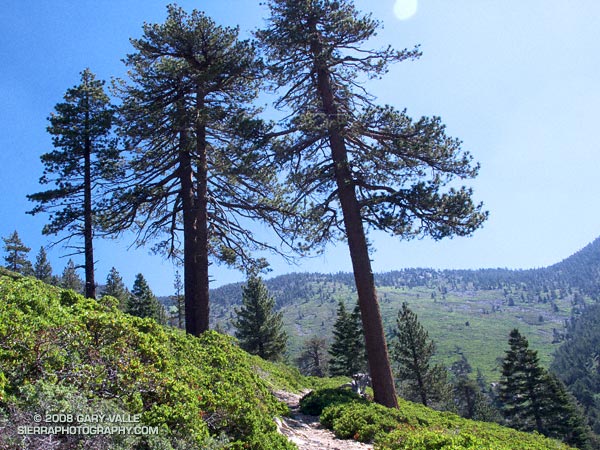
Lowland blues got you down? Are you beginning to think faux pine tree cell towers aren’t that ugly? Do you gaze longingly at distant mountains and then realize you’re looking at a billboard?
When I feel that way, one of the close-to-home hikes/runs that satiates the alpine craving is the Falls Creek loop on Mt. San Gorgonio. The ‘Falls Creek up, Vivian Creek down’ route has been a high mountain favorite of mine for a number of years. It is as rigorous as it is beautiful. About 24.5 miles long, it gains approximately 6600′ on the way to the 11,499′ summit of San Gorgonio.
Even at 7:30 in the morning, the climb out from the Momyer trailhead on the steep, south-facing slope of Mill Creek canyon had been warm, but in about an hour we were in the firs and pines, and contouring into the shaded drainage of Alger Creek. Another 30 minutes and the trail has joined the route of the original Falls Creek trail — climbing to the eastern side of the divide between Alger Creek and Falls Creek and turning north as it entered the Falls Creek drainage. (A spur trail descends to Dobbs Camp.)
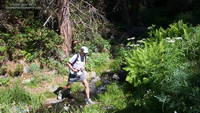
The trail up the Falls Creek drainage has few switchbacks and is deceivingly steep, but the segment is one I always enjoy. Near Saxton Camp its course works back into a lush side canyon, where it crosses an idyllic stream in a pastoral mountain setting. Above Saxton Camp, the area has an isolated, big sky, big mountain feel. Bright green slopes of manzanita extend upward for miles, and stale flatland sights, smells and sounds are displaced in favor of deep blue skies, the minty fragrance of pennyroyal, and the raucous shouts of Stellar’s jays.
Just get me to Dollar Lake Saddle… Please! I don’t know what it is about this section of trail, but the short 1000′ climb from Plummer Meadows to Dollar Lake Saddle is always tougher than I expect. Maybe it’s the altitude, maybe it’s the miles I’ve run during the week, or maybe it’s a gravity anomaly — whatever, it’s a relief to get to the saddle.
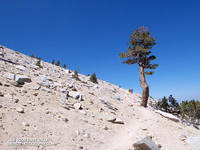
Above the saddle, the trail becomes more airy and alpine, and at times there are views of the summit area of Gorgonio and down Gorgonio’s north face. Adrenalin flows and the effort required seems to ease. Sometimes running, sometimes hiking, we continue up the rocky path.
About an hour above Dollar Lake Saddle, we jog across a nice flat stretch of trail just below Gorgonio’s summit. It’s around noon when Andrew and I weave our way through a final few boulders to the summit. Relaxing on the summit, we chat with others about their routes, and talk about running and the mountains.
In February, Andrew caught the trail running bug. In May he completed his first ultra — a fifty miler. Now he’s training to run the Angeles Crest 100 mile endurance run in September. Today’s ascent of San Gorgonio is the first of two long mountain trail runs he will do this weekend.
After about 15-20 minutes on the summit, we jog back to the Vivian Creek trail, jump on the escalator and head down. There are the usual stops to get water at Upper Vivian Creek (the last water was at Plummer Meadows), and to take a few photographs. There’s also a quick stop to have our wilderness permit checked.
Around 2:50 we’re off the mountain and crossing Mill Creek, and in a few minutes we’re running down the blacktop and back to Momyer.
Here’s a Google Earth image and Google Earth KMZ file of a GPS trace of the loop. Surprisingly, it is only about 1.5 miles shorter than the “high line” loop that ascends East San Bernardino Peak before traversing to Mt. San Gorgonio.
Related post: San Gorgonio High Line
